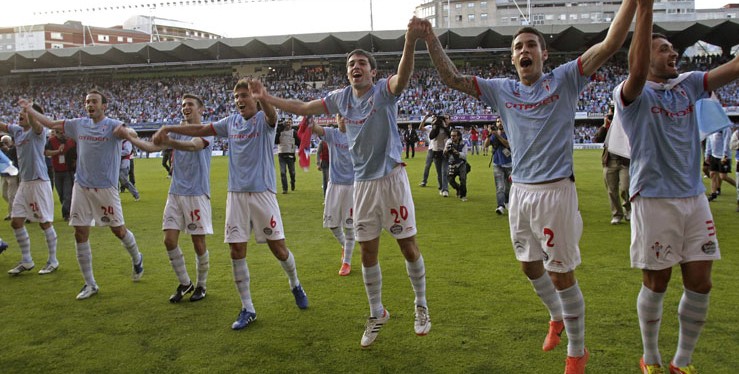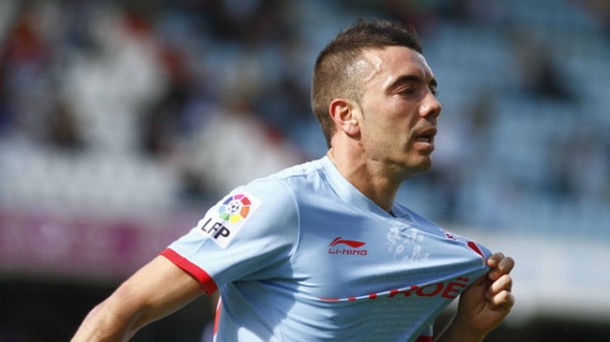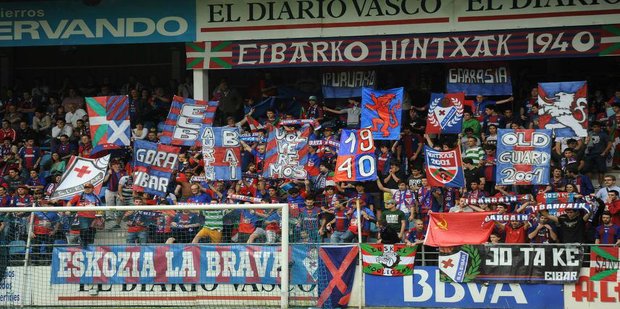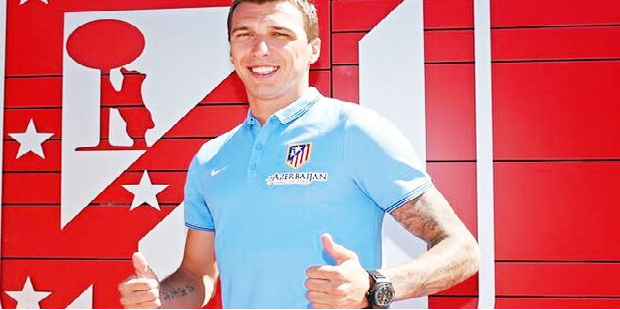- S.D. Eibar ready for maiden La Liga outing
- SD Eibar stengthen ahead of debut La Liga season
- Can ‘Super Mario’ live up to expectations in Madrid?
- MAN IN THE GROUND – Brentford 0 – 4 Osasuna
- Historic Basque derby welcomes S.D. Eibar to La Liga
- Munich to Madrid, via Brazil – Tony Kroos
- Rakitic in Spanish Switch
- Can Spain find redemption in Rio?
- Viva Espana! A season of redemption for Spanish football
- From the old to the new: who can fill the void in years to come for La Roja?
Celta look to reach past heights as top flight football returns to Vigo
- Updated: 15 July, 2012


Located in the Galician region of Spain and overlooking the Atlantic Ocean, the picturesque city of Vigo is one that is currently looking forward to hosting top flight football for the first time in five seasons.
It is a turnaround that has gone full circle for a club who just a couple of years ago were confronted with the very real prospect of going out of business.
Founded in March 1923 after the city’s top two clubs Real Vigo Sporting and Real Fortuna Football club decided that to have any chance of competing at the top level they would have to combine resources and merge, the story of Celta Vigo is one that for a large part has enjoyed many successes.
Based at the Estadio Municipal de Balaídos since 1925, the whole purpose of the formation of the club was ultimately to give the city a football team that they could be proud of and thus the slogan “Todo por y para Vigo” (All for and to Vigo) was aptly born.
By the end of the 20th century and the turn of the Millennium, Celta Vigo had not only established themselves as regulars in the top six but were becoming a feature in European competition with appearances in both the UEFA cup and Champions League.
In fact following the 2001 -2002 season where the club didn’t fall out of the top sixth all season, they were prestigiously named as the ‘Best team in the World’ by the International Federation of Football History & Statistics.
Unlike the teams in the Basque Country, perhaps the main factor as to Celta Vigo’s success was that they weren’t afraid to look outside of Spain for new recruits.
In fact the squad had worldwide appeal with the Russian stars of Aleksandr Mostovoi and Valery Karpin combining with influential Frenchman Claude Makelele, Argentine shot stopper Pablo Cavallero and South African hit man Benni McCarthy.
However, and unfortunately for fans of Celta the success was not built to last and despite reaching the last sixteen in the Champions League before eventually falling to Arsenal, the team finished second bottom in the league and were relegated to the Segunda division.
As Villarreal demonstrated last season, playing in the Champions League does not mean that you are immune from relegation. The well-used phrase ‘you’re not too good to go down’ could never have rung so true.
Immediate promotion back to the top flight followed in the 2004-2005 season, however after a successful first season back where they qualified for the UEFA Cup, Celta were relegated back to the Segunda in 2006/2007. With crippling debts, it was feared that it could be a relegation to prove fatal.
Extensive player sales followed and the club were saved from going into administration after an agreement between the club and their creditors. Inevitably the player sales led Celta to a rapid descent from one of Spain’s elite to competing with reserve teams and the club came dangerously close to a further relegation.
Even the most optimistic of Celta Vigo fan would have been mocked at the prospect of just three years later being back in the big time. And yet, somehow miraculously, they are.
Guided by manager Paco Herrera – ex-assistant manager to Rafael Benitez at Liverpool – the club bounced back from playoff disappointment in 2011 where they lost to eventually promoted Granada, to finish second behind fellow Galician side Depor and secure their return to La Liga after a five year absence.
Key to that success was the 6’1″ Spanish centre forward Iago Aspas who managed to net an impressive 23 times. A product of their youth academy much will be expected of Aspas to take his goal scoring exploits up a notch into the top division.
Celta must be under no illusions that in order to have any chance of extending their stay beyond one season, they must extensively strengthen. But like many other clubs, they know they have to do it on a stringent budget. An irresponsible splurge followed by an unsuccessful season would see Celta right back in financial difficulties.
Experienced goalkeeper Javi Varas has arrived on loan from Sevilla, while the club have splashed out €400,000 for Hercules centre back Samuel Llorca.
Speaking about his move Varas commented: “I am very excited about this project. I come to Vigo in order to help the team achieve permanence.:
Speaking of the challenges that await, the 29 year old told reporters: “I know that the first year is tough and suffering, but I come with the intention to help the team.”
You get the feeling that for Celta Vigo, this is a season that is very much make or break. Anything other than immediate relegation would be a remarkable achievement for everyone at the Balaídos stadium.
Follow @icentrocampista






One Comment
You must be logged in to post a comment Login